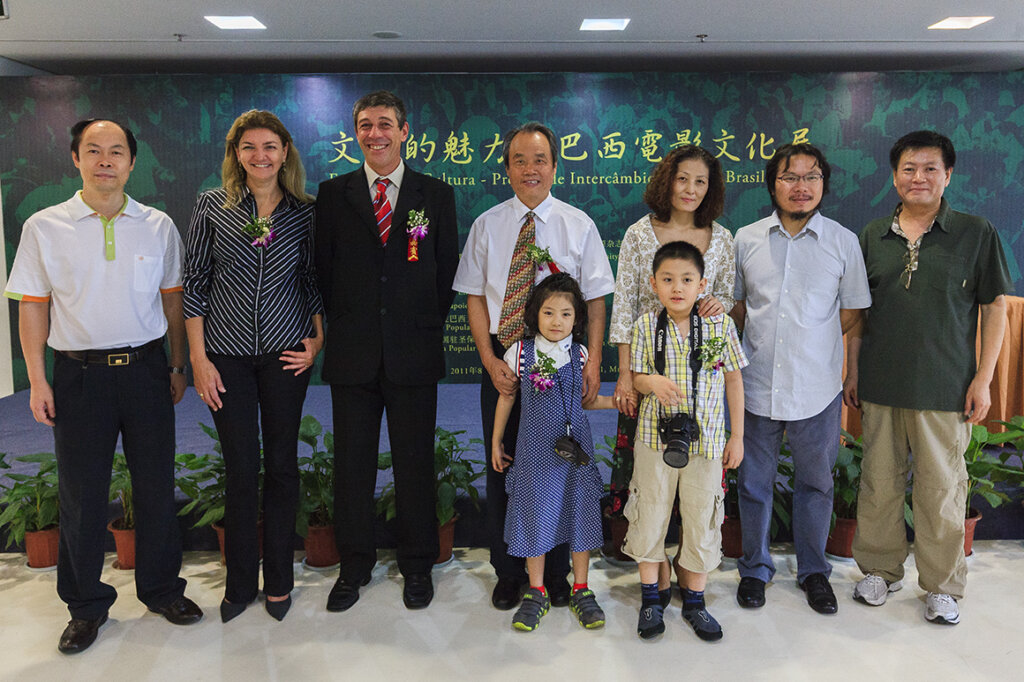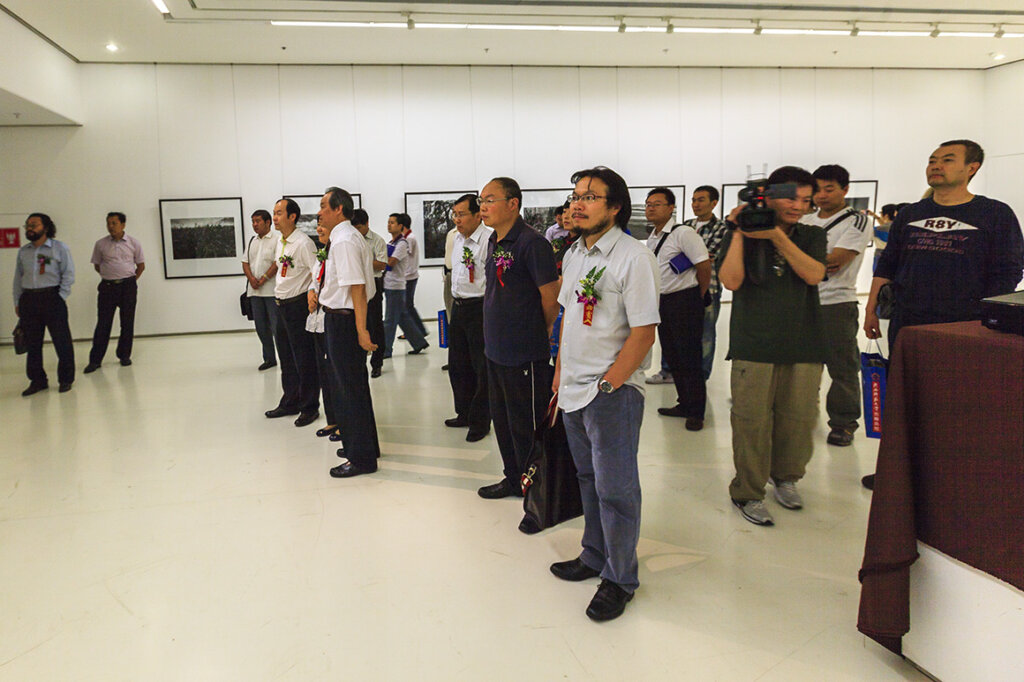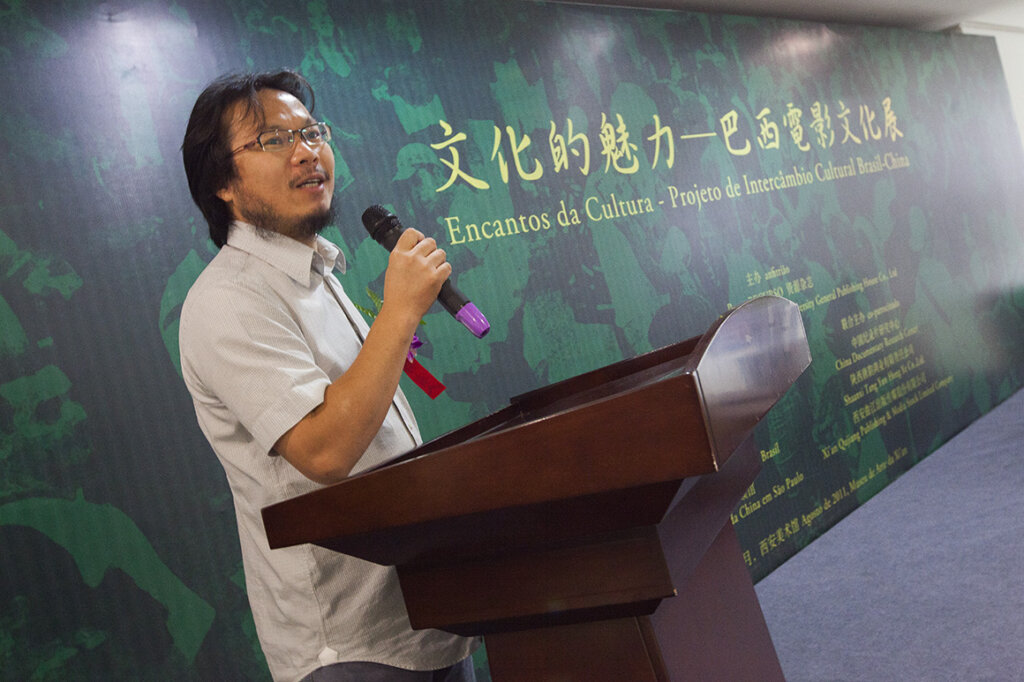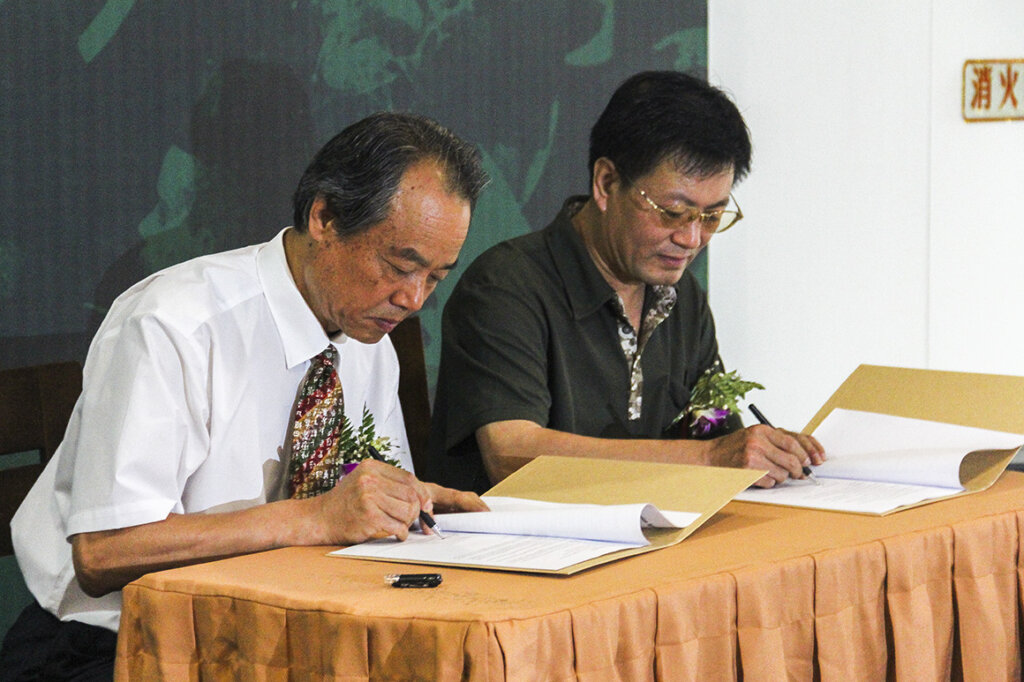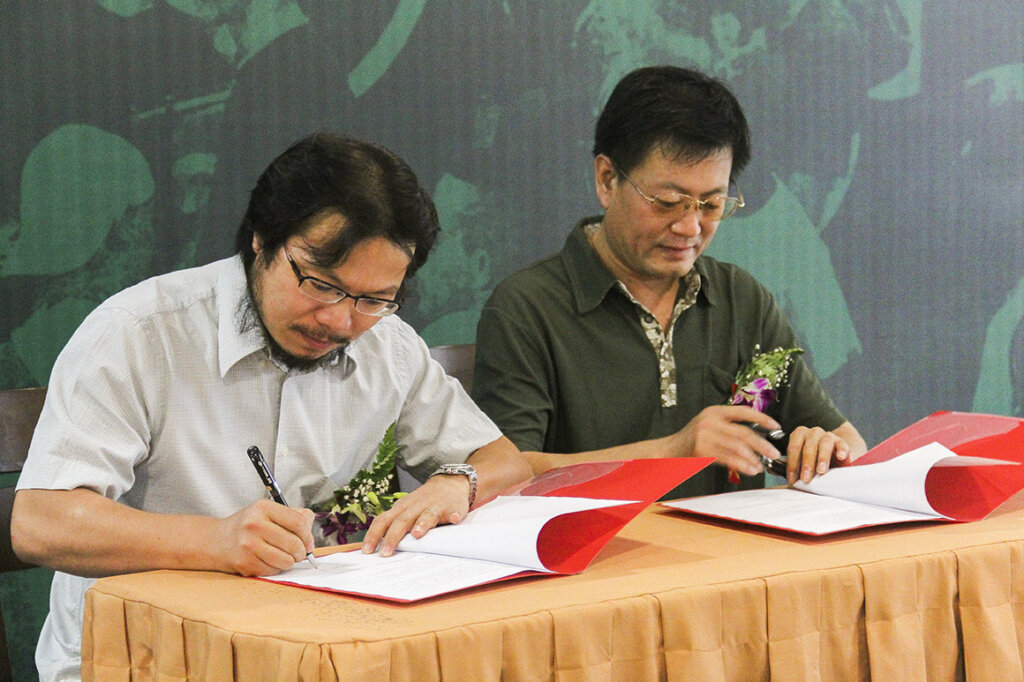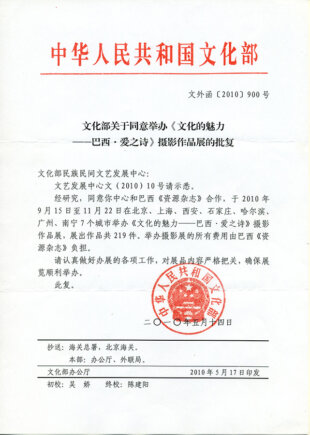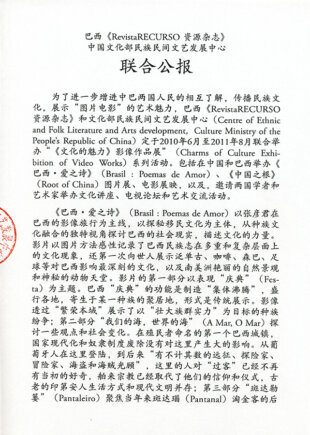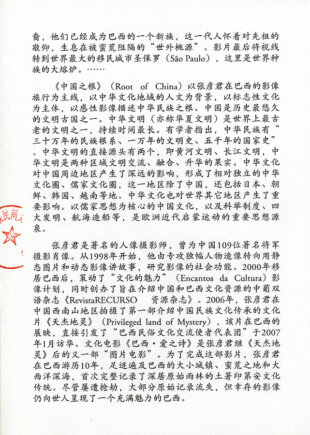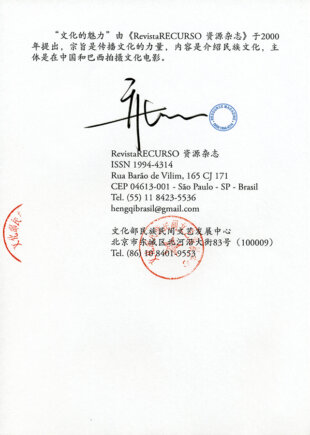Preface 1
I met Mr. Zhang and his family quite accidentally when they came to borrow a five star national flag, which impressed me a lot. And I gradually knew about their story in later communication. At the very beginning, it was rather difficult for me to understand for what reason on earth that the couple gave up their jobs, traveled thousands of miles, and invested all they had to engage in photographing in Brazil for a decade. Not knowing the local language in such downright unfamiliar surroundings, they were faced with various difficulties and dangers. Then what was the impetus propping them up in so hard time? Sitting down on a loft in the setting sun, I looked at the shootings and was deeply moved as the couple narrated their experience. They came here only because of their dream and crazy love to the Brazilian culture. They were auspicious for they embraced dreams and were in pursuit of the dreams. Brazil, as a country of immigrants, has multiculturalism and integrated characteristics fused here. In addition to local samba, soccer, there is German-styled Oktoberfest, the traditional Dutch flower festival and the Swiss-flavored pine nuts festival, which contributes to a colorful and dizzying atmosphere. Brazil has tantalizing natural scenery, embodied in its waterfalls, swamps, beaches, the Amazon forest, pythons, piranhas, Blue Macaw and Jabiru Stork……; the primitive and wild beauty was revealed everywhere. Mr. Zhang, with his camera, showed to the world the beautiful scenes, some places of which many people have not ever been able to reach. Commendably, the information about many of these precious pictures was from the “Little Photographer”, Link Zhang. He, who is only 7 years old, and his 5-year-old young sister, who was born in a jeep, experienced full of bumps since they were born along with his parents. Thus young as they were, they could made skillful use of camera, just like playing Transformers. I have joked that they resembled the “Little Xu Xiakes” in the twenty-first century. (Xu Xiake was a Chinese geographer, traveler and litterateur in Ming Dynasty.)The public order in Brazil was not quite satisfying. The family of Mr. Zhang was looted many times and the most disastrous one was two years ago when 200 hard drive full of videos, 2 editing machines, 15 computers and images photed in the past etc. all missed. A few months later, the jeep disappeared without traces. This made a heavy blow on them. However, they made it through and survived, starting everything from scratch again.With the family growing from husband and wife first to four members today, they spent a decade in Brazil which they have understood, experienced and interpreted, so as to manage to accumulate heaps of valuable image data. Now, they have handed in an answer sheet by introducing Brazil to the world from their own perspective. Ten years witnessed the couple’s traces of nearly 160 thousand kilometers, a creation of almost 6,000- hour-long videos and kind of millions of pictures, their kids’ arrival in the world and the pursuit of their dream. They made a fruitful harvest.
Sun Rongmao
Consul General of the People’s Republic of China in Sao Paulo, Brazil
On March 19, 2009 in Sao Paulo
Preface 2
Publishers shoulder the mandate of spreading world culture and linking up human civilization. As a well-known publishing house in China, Shaanxi Normal University General Publishing House Co., Ltd. has always been consciously devoting to this cultural mandate, actively exploring routes and cooperators for our overseas publishing. Recently, we have reached consensus on strategic cooperation with RevistaRECURSO of Brazil through which we plan to engage in promoting the exchange of Chinese culture and South American culture by various means, such as federated media publishing, in the long term. The film culture exhibition of Encantos da Cultura – Poemas de Amor do Brasil held at Xi’an Art Museum marked the formal commencement of this strategic cooperation.The exhibition totally exhibited 200 frames of documentary film, Encantos da Cultura – Poemas de Amor do Brasil, meanwhile broadcast the background video of this film. The frames, for the first time, represented Chinese audience with the complexity of multiple cultures among Brazilian nationalities as well as the splendid natural landscapes of South Africa. This form of exhibition was an unprecedented innovation for Chinese peole, particularly through the image interpretation of Brazilian culture by Mr. Yanjun Zhang and Mrs. Linjie Xiao from their unique perspectives accumulated in the past 10 years in Brazil. We, Shaanxi Normal University General Publishing House Co., Ltd., extend our deep respect to their devotion and persistence to culture.At the BRICS Summit in April 2004, the governments of China and Brazil signed the Joint Action Plan between the Government of the People’s Republic of China and the Government of the Federative Republic of Brazil, 2010-2014. In April 2011, it was also at the BRICK Summit that Dilma Vana Rousseff and President Hu Jintao signed the Joint Communique which emphasized the importance of further exploring and enhancing the exchange and cooperation in such fields as creative economy and cultural industry between the two countries. It is a landmark which indicates that the relations between the two countries have entered into a new stage with frequent interaction and practical cooperation. This historic change is a new opportunity for Chinese publishers to promote their publishing operation to South America. We hope that a new bridge will be built during the exchange between Chinese culture and Brazilian culture as well as South American culture, through the cooperation between our publishing house and RevistaRECURSO and the joint implementation of the film communication plan of Encantos da Cultura. We believe that this exhibition will surely become a foundation stone for this “Bridge Building Project”.
Gao Jingwei
President of Shaanxi Normal University General Publishing House Co., Ltd.
On August 20, 2011 in Xi’an
Author preface
This was an extraordinary photography experience, from a perceptual plan to a hunt for photos, and from a video exploration to a survival exploration in the “depopulated zone”.It was the legendary experience that created this great film. From the fusion of world immigrants to the towns of South American aborigines and to the gold washers who lived alone in the depopulated zone, we, for the first time, used video to describe the fusion of ethnic cultures and exhibit the unknown world deep in the Amazon River, as well as the forgotten ethnic groups and their mysterious culture unknown to the outside world. From the enchantment of graceful, charmful and distinguished beach culture to the sacred “last frontier virgin land”, from the observance on the orthodox custom left from the middle century to Sao Paulo unscrupulous show of its wealth, and from the of the model of humane economy, “Carnival” festival’s magnificence and joyful atmosphere suffused with explosions to Pantaleiro’s royal but blurry missing to the birth land, fully singing out infinite pathos and grief ….The first part of the film is themed on celebrations (Festa). Its purpose is to create “collective ebullience”, popular among all regions, rooted in a habitation of certain races and displayed in the traditional form. The film explores racial conflicts for enlarging the power of ethnic groups by way of “prosperity of domain”. The second part, “Our Sea, the Sea of the World” (A MAR, O MAR) discusses varying viewpoints and social changes. In the first Brazilian town (Cananéia) named by colonists, state modernization and the abolition of slavery haven’t left much impact. From the time when the Portuguese landed to the period when countless expeditions, adventurers, explorers, pirates and sea thieves came and left, the local inhabitants have lost their initial curiosity towards the passers-by. Imported religion has taken the place of their traditional faith and ceremonies and the Indian’s ancient way of life coexists with modern civilization. The third part, Pantaleiro focuses on the descendants of gold prospectors, who have become a new ethnic group in Brazil. Cherishing and respecting their ancestors, these people live in a paradise isolated by wilderness. Finally, the film turns its focus to Sao Paulo, the largest immigrant city in the world and a melting pot of all races. There are eighty million people with the most complex races around the world living here. The common dream impelled different ethnicities to unite into a “pure ethnic group” – St. Paulers (Paulista). With experience and toughening, this great “melting pot of world’s immigrants” has formed a splendid and fantastic “Local Culture”, as is reflected on the spiritual and sensory levels of their people and rooted in various aspects of life.
Yanjun Zhang
President of BOA Center Limited & RevistaRECURS
February 20, 2009 in Sao Paulo


